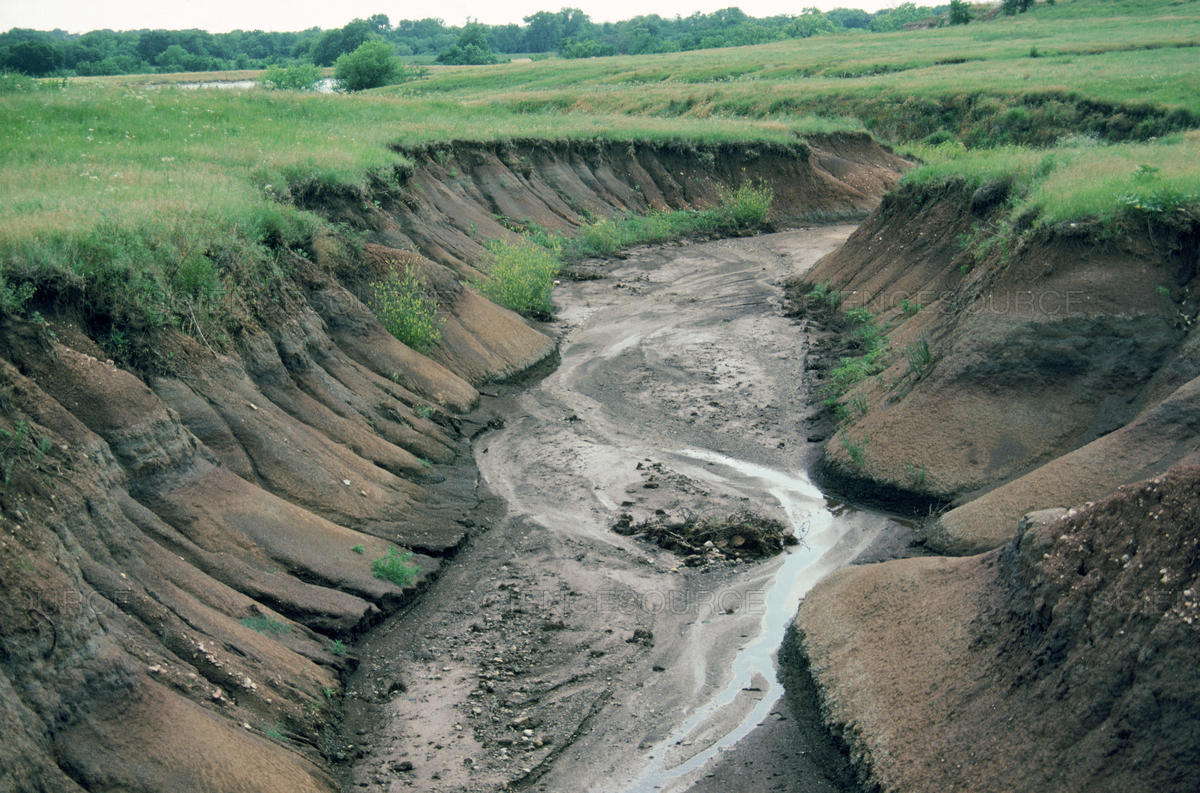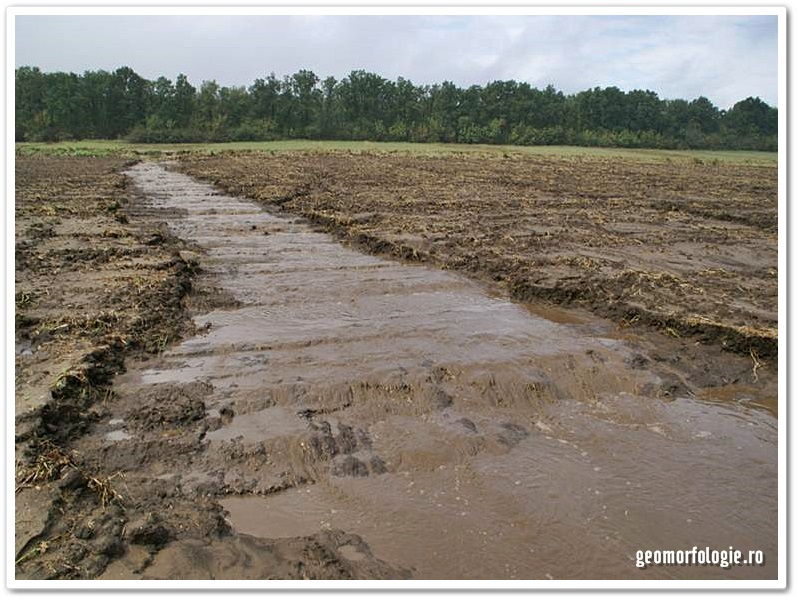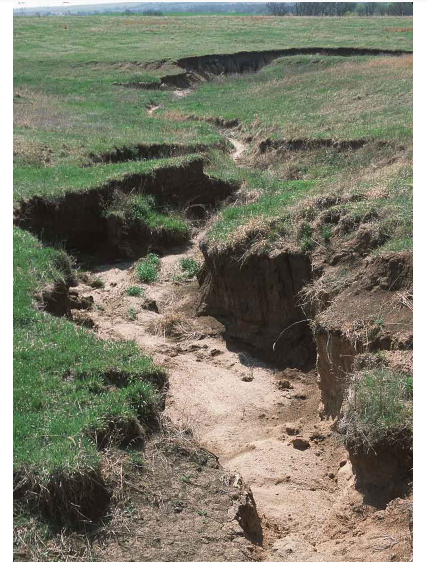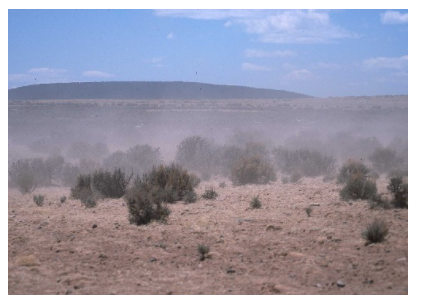Erosion occurs when farming practices are not compatible with the fact that soil can be washed away or blown away. These practices are:
- Overstocking and overgrazing.
- Inappropriate farming techniques, such as deep-ploughing land two or three times a year to produce annual crops.
- Planting crops down the contour instead of along it.
Click here to view a video on soil erosion around the world - causes and solutions.
Water Erosion
Water erosion causes two sets of problems:
- On-site loss of agricultural potential.
- Off-site effect of downstream movement of sediment, causing flooding and the silting up of reservoirs (dams, lakes, rivers).

Sheet Erosion
- Soil erosion is characterised by the down-slope removal of soil particles within a thin sheet of water.
- Sheet erosion occurs when the entire surface of a field is gradually eroded in a uniform way.
- It is a gradual process and it is not immediately obvious that soil is being lost.

Rill Erosion (Channel Erosion)
Channel erosion can occur on steep land or on land that slopes more gently. Because there are always irregularities in a field, water finds hollows in which to settle and low-lying channels through which to run. As the soil from these channels is washed away, channels or miniature dongas are formed in the field.

Gully Erosion (Dongas)
Dongas usually occur near the bottom of slopes and are caused by the removal of soil and soft rock because of concentrated runoff that forms a deep channel or gully. On steep land, there is often the danger of gullies forming. Water running downhill cuts a channel deep into the soil, and where there is a sudden fall, a gully-head forms at the lower end of the channel and gradually works its way back uphill. As it does so, it deepens and widens the scar that the gully makes in the hillside. Gully erosion is related to stream bank erosion, in which fast-flowing rivers and streams increasingly cut down their own banks.

Wind Erosion
Wind erosion occurs when the land surface is left bare in regions that are arid enough, because of low rainfall, to allow the soil to dry out, and flat enough to allow the wind to carry the soil away over several consecutive days. Land may become susceptible to wind erosion through grazing animals, which remove the protective plant cover, and hooves break up the soil, especially around watering points. Arable land that has been left bare is also a major problem.
